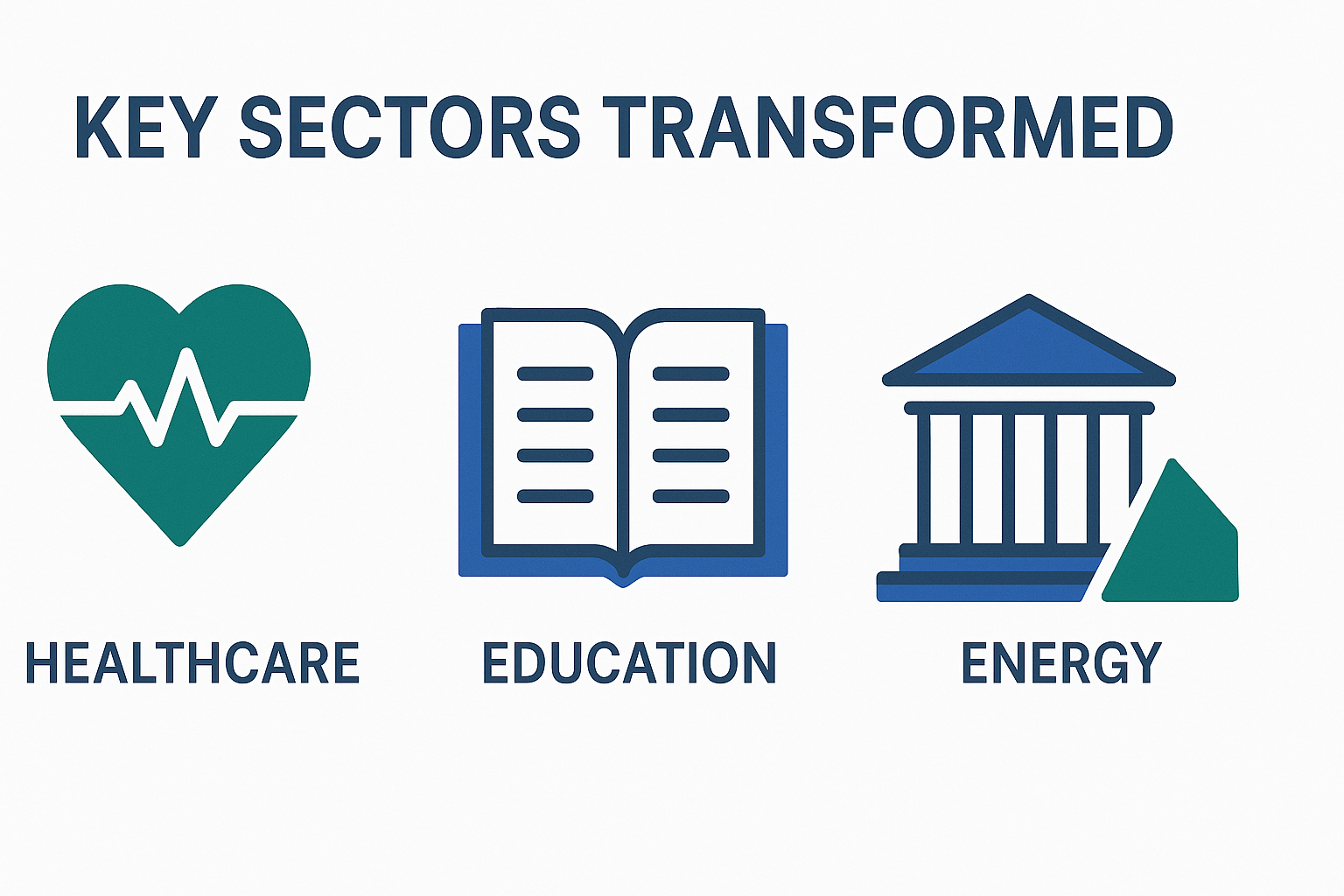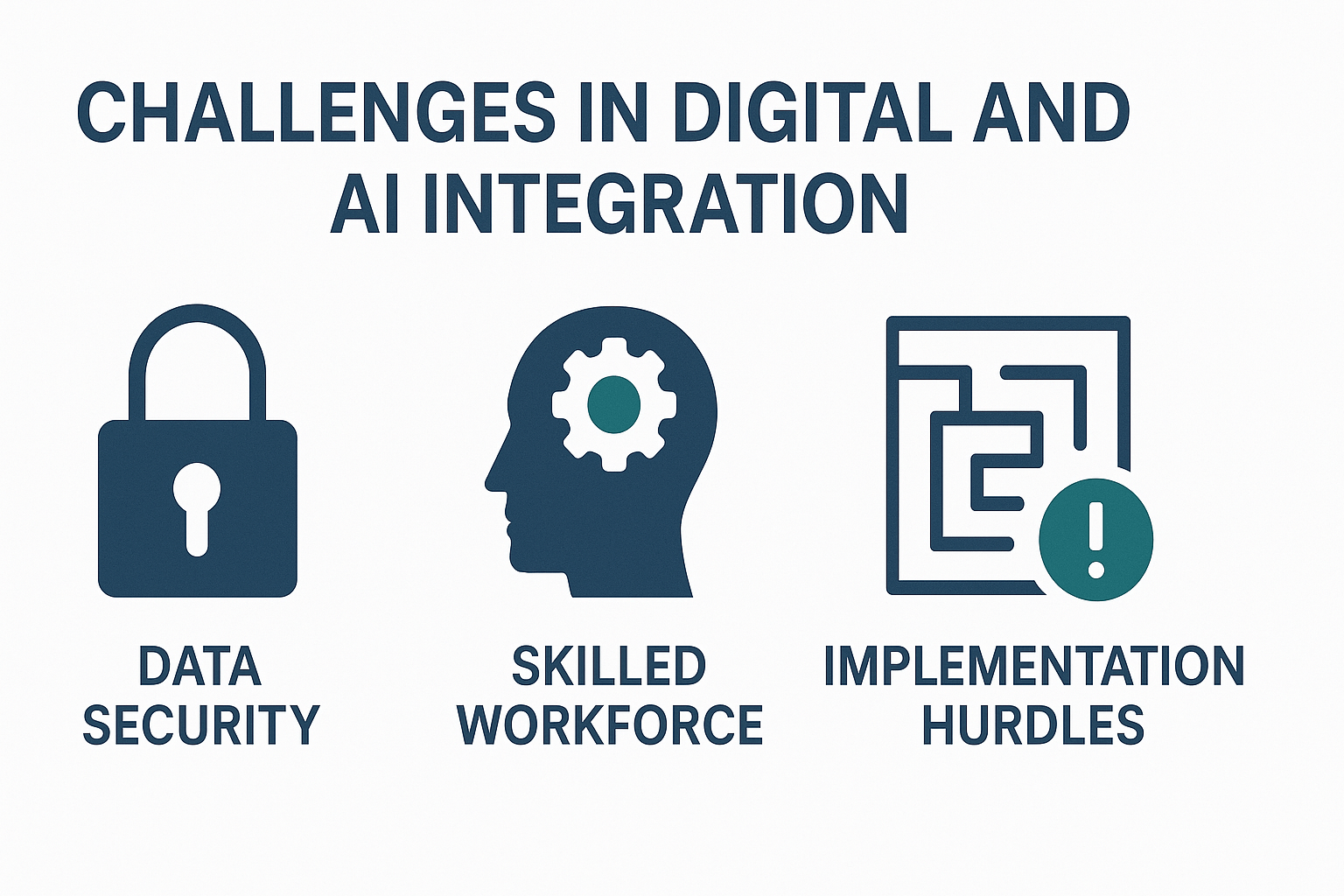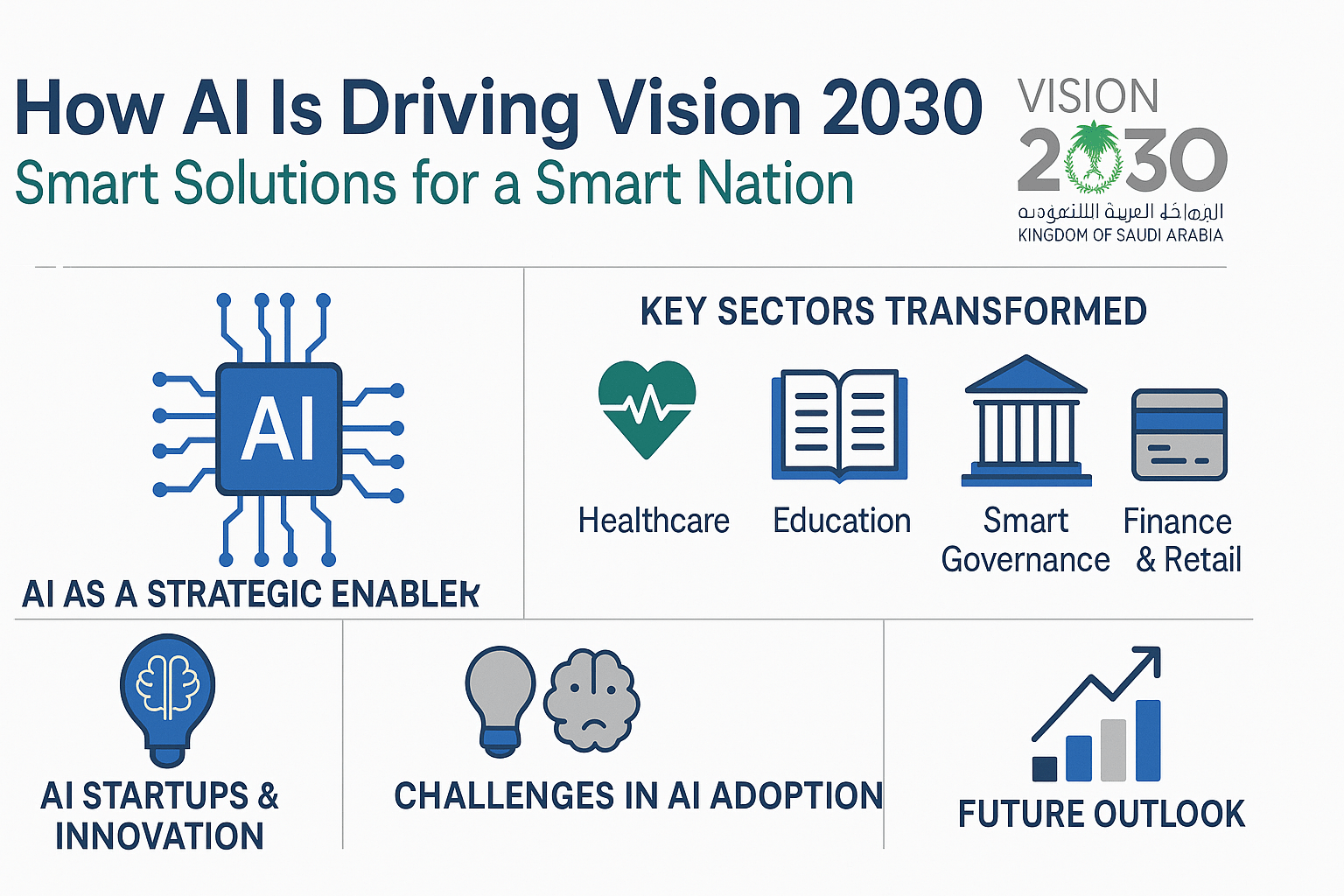How AI and Digital Transformation Are Driving Vision 2030: Smart Solutions for a Smart Nation
Saudi Arabia is undergoing a historic transformation under its Vision 2030 initiative, which aims to diversify the economy, reduce dependence on oil, and enhance the quality of life across the Kingdom. At the core of this ambitious vision is technology, and more specifically, artificial intelligence (AI) and digital transformation. These innovations are revolutionizing traditional industries and strategically shaping a smarter, more connected, and sustainable future for Saudi Arabia. This article explores in depth how AI and broader digital transformation efforts are key enablers of Vision 2030 and transforming sectors ranging from healthcare to governance.
What is Vision 2030?
Launched in 2016 by Crown Prince Mohammed bin Salman, Vision 2030 is Saudi Arabia’s long-term strategy to transition from an oil-dependent economy to a diversified and sustainable one. Its framework is structured around three primary pillars:
- A Vibrant Society – Enhancing quality of life through cultural, social, and recreational opportunities.
- A Thriving Economy – Reducing unemployment, increasing GDP, and supporting entrepreneurship.
- An Ambitious Nation – Improving government effectiveness, transparency, and citizen engagement.
Digital transformation, particularly AI, is central to achieving these objectives. The creation of institutions such as the Saudi Data and Artificial Intelligence Authority (SDAIA), the National Center for AI (NCAI), and the National Digital Transformation Unit (NDU) highlights the Kingdom’s strategic commitment to harnessing data and emerging technologies.
Digital Transformation and Vision 2030 Alignment
Digital transformation refers to the adoption of digital technologies to radically improve the performance or reach of enterprises and government functions. In Saudi Arabia, it is the linchpin of modernization under Vision 2030. The National Transformation Program (NTP) outlines specific targets such as building digital infrastructure, supporting smart city development, expanding e-government services, and fostering innovation ecosystems.
Key alignment strategies include:
- Smart Infrastructure: Deploying 5G networks, cloud computing, and IoT to power digital services.
- Digital Economy: Encouraging tech startups and digital platforms across sectors.
- Data Governance: Implementing policies for secure and ethical use of data.
- Workforce Development: Upskilling citizens to thrive in a digital-first economy.
These pillars converge with AI integration to create a seamless and agile public-private digital environment that accelerates the country’s transformation goals.
Role of AI in Vision 2030
AI is playing a pivotal role in enabling data-driven policymaking, optimizing service delivery, and facilitating automation across the public and private sectors. According to PwC, AI could contribute $135 billion to the Saudi economy by 2030. Saudi Arabia is positioning itself as a global hub for AI by investing heavily in infrastructure, R&D, and skills development.
One of the hallmark projects showcasing AI’s integration is NEOM, a $500 billion smart city that aims to incorporate advanced technologies into every facet of urban life, from energy and transport to governance and education. The Line, a 170-km linear smart city within NEOM, is planned to have no cars, streets, or carbon emissions—its systems managed entirely through AI and machine learning.
Key Sectors Transformed by AI and Digital Transformation

1. Healthcare
AI and digital health platforms are revolutionizing healthcare by enhancing diagnostics, patient care, and resource management. AI-powered systems detect diseases early, while telemedicine platforms powered by 5G and data analytics expand access to remote care.
The Ministry of Health has implemented digital platforms like Sehhaty and Mawid, allowing citizens to book appointments, view health records, and access services with ease. AI-enabled imaging and predictive analytics are also being integrated to improve public health decision-making.
2. Education
Education in Saudi Arabia is being modernized through AI-driven e-learning systems, virtual classrooms, and smart assessment tools. The Madrasati platform enabled millions of students to continue learning during the pandemic, and the integration of AI now enables personalized learning paths and performance prediction.
Additionally, universities and training centers are investing in digital literacy and AI certifications to prepare the youth for future job markets. The alignment with Vision 2030 is clear in the way digital education is helping build a knowledgeable and skilled workforce.
3. Smart Governance
Government digitalization is central to building an ambitious nation. Platforms like Absher have digitized over 160 services, allowing residents to interact with public agencies effortlessly. AI chatbots are increasingly used to assist users and resolve queries instantly.
SDAIA is further supporting smart governance through data-driven urban planning, environmental monitoring, and predictive policing. These initiatives not only streamline operations but also foster greater citizen engagement and trust.
4. Finance and E-Commerce
Saudi Arabia’s financial sector is undergoing a digital revolution. Fintech solutions powered by AI enhance fraud detection, credit scoring, and customer service. The rise of cashless payments, mobile banking, and robo-advisors is transforming the financial landscape.
The e-commerce sector, supported by platforms like Noon and Amazon.sa, uses AI for inventory optimization, logistics automation, and customer behavior analysis. These digital capabilities improve user experience and boost economic competitiveness.
5. Energy and Sustainability
AI and digital transformation are enabling smarter energy management in line with Vision 2030’s sustainability goals. Saudi Aramco uses AI to monitor and optimize operations, predict equipment failures, and reduce emissions.
Renewable energy projects like the Sakaka Solar Plant use digital twin technology and IoT sensors for real-time performance monitoring. These innovations support the Kingdom’s ambition to become a leader in clean energy and environmental stewardship.
Innovation Ecosystem and Startup Growth
Vision 2030 has created a fertile ground for innovation through regulatory reforms and financial incentives. Initiatives like the MiSK Innovation, STC InspireU, and Monsha’at support entrepreneurs in scaling digital ventures. The emergence of AI and SaaS startups such as Mozn, Quant, and Lean Technologies demonstrates this momentum.
Semantic Brains, for instance, exemplifies Vision 2030’s direction by offering AI-powered solutions in business intelligence, machine learning, and smart infrastructure. Its support for healthcare, retail, and government sectors contributes to building a data-driven digital economy.
Challenges in Digital and AI Integration

Despite significant progress, some hurdles must be addressed:
- Digital Inclusion: Ensuring rural areas and underserved communities benefit equally from digital services.
- Talent Gap: Bridging the shortage of AI and tech professionals.
- Regulatory Compliance: Developing comprehensive policies for AI ethics, cybersecurity, and data privacy.
- Change Management: Aligning organizational culture with digital-first mindsets.
To overcome these, public-private partnerships and international collaborations will be critical.
TO READ MORE ABOUT Opportunities and Challenges in Businesses in Saudi Arabia
Looking Ahead: A Smarter Future for Saudi Arabia
By 2030, Saudi Arabia aims to rank among the world’s top 10 countries in digital competitiveness. With investments exceeding SAR 100 billion in digital infrastructure, AI research, and startup incubation, the future is bright.
Digital transformation is not just an enabler but the foundation upon which Vision 2030 is being built. As AI, data science, and cloud computing continue to mature, Saudi Arabia is poised to become a global model of how emerging technologies can drive national transformation.
Conclusion
AI and digital transformation are not merely technological trends—they are the backbone of Saudi Arabia’s Vision 2030. By integrating these technologies into every aspect of society, the Kingdom is advancing toward a sustainable, inclusive, and prosperous future. Businesses and institutions must seize this moment to align with national priorities and innovate for impact.
For forward-thinking organizations ready to lead this evolution, Semantic Brains offers the expertise and tools to unlock the power of AI and digital transformation. Let us help you reimagine what’s possible in the era of Vision 2030.


